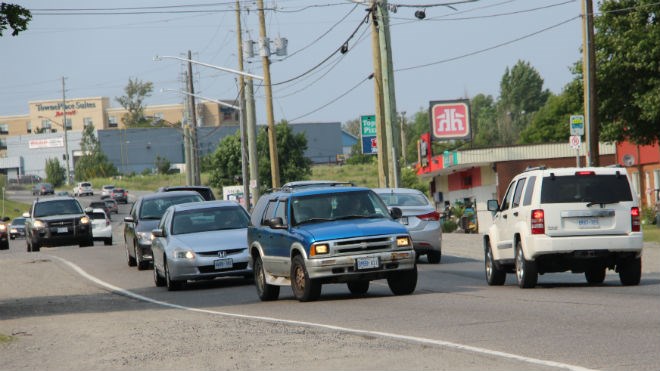Zechner says the first study on environmental approvals in 2010 found the process cost the province $310 million a year, and delayed the start of projects by an average of 19 months – and things have gotten worse since then.
“We thought with the pressure in 2010, and the co-operation of the Municipal Engineers Association, I thought we would have shortened the timeframes — but it actually increased by seven months,” Zechner said Thursday.
One of the major problems is the lack of objective criteria the province uses when classifying projects as either Schedule A, B, or C, he said. In broad terms, a Schedule A projects involve repairing existing infrastructure; Schedule B projects repair infrastructure and include minor expansions; Schedule C projects are for new roads or other infrastructure.
“Schedule C is usually new roads, while schedule B is road widening,” Zechner said. “But if you were widening 20 kilometres of road from two lanes to six lanes, that would definitely be a Schedule C. So it's a bit of a dog's breakfast to go through to determine what is B and what is C.”
The lack of specific definitions is especially problematic when it comes to requests from the public to upgrade the EA from a Schedule B to a Schedule C, he said. Each bump-up request, as they're known, must evaluated individually, and the municipality involved has to prepare a formal response and argue why it's not warranted.
That's what happened here in Sudbury, when the $5.7-million Second Avenue road project was delayed for at least a year when the MOE received bump-up requests from Minnow Lake Community Action Network members John Lindsay and Dot Klein. They argued the project should be bumped from a Schedule B to a Schedule C, because widening Second Avenue to five lanes between Donna Drive and Scarlett Road could lead to an unacceptable increase in vehicle exhaust emissions and in stormwater runoff into Ramsey Lake.
In a letter this week to Northern Life, Klein said her primary concern was the health of young people in the area. A nurse and a certified asthma educator, Klein said she was concerned for the health of students who walk to and from Adamsdale Public School.
“When I realized that our community is possibly putting children's lives and future at risk by making an impulsive decision without proper consideration, I stepped up to the plate," she wrote. “Children are important and the most valuable asset our community has. They must be protected and nurtured. It takes a whole village to raise a child.
“(And) obviously my concerns had merit, or the ministry would not have responded as they did.”
Not true, Zechner said, and that's one of the biggest problems with the process in Ontario. Anyone can stop an infrastructure project by the act of writing a letter. Worse, while added costs and delays are easy to measure, there's no evidence that the process has helped the environment. Bump-up requests are almost always denied — in fact, they were rejected in all 17 cases he studied in 2010. But the infrastructure projects were still delayed for as long as 22 months.
“That's the frustrating thing — opponents don't have to show any merit in making their request,” he said. “It's something that's abused quite a bit in Ontario.”
In other provinces, Zechner said if you're doing a project that will improve safety – for example, by putting in left-hand turning lanes, lessening the chance of fender benders or other accidents – EAs aren't required at all.
“You get as much or more emissions from idling vehicles stuck in traffic from people trying to make a left-hand turn,” he said.
“Ontario is unique in that many projects that would be exempt across Canada are still subject to EAs. No one has a process that's as detailed and costly as the one in Ontario.”
He cited an example of a plan to put in a bike path along a short stretch of road in a southern Ontario city at a cost of $50,000. But the EA the municipality was forced to complete cost $130,000.
Reforms the alliance has been pushing for include detailed criteria that would more clearly determine what level of environmental assessment is required for the projects.
“For example, everyone else says things like, OK, if the lane widening is more than five kilometres, then it goes into the high (EA) category, if it's less, it goes into the other,” Zechner said.
That way, objections from the public could be evaluated much more quickly and accurately. Complaints without merit could be rejected without adding months or years to the project.
Other reforms would eliminate the duplication that requires environmental approvals under both the Planning Act and the Environmental Assessment Act. Instead, the alliance wants the process to be parallel, significantly reducing the time it takes to get projects approved.
“Basically, you would have all the public consultation done at once,” he said.
While the governing Liberals have been receptive, Zechner said successive minority governments have had more pressing concerns to deal with.
“They've been hoping from election to election,” he said.
With the majority government and a new minister in place, the alliance is hoping to finally make progress.
Join Sudbury.com+
- Messages
- Post a Listing
- Your Listings
- Your Profile
- Your Subscriptions
- Your Likes
- Your Business
- Support Local News
- Payment History
Sudbury.com+ members
Already a +member?
Not a +member?
Sign up for a Sudbury.com+ account for instant access to upcoming contests, local offers, auctions and so much more.
